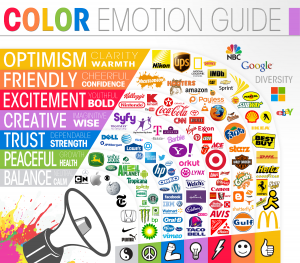Given the sudden interest for the color of article of clothing dresses for famous, nearly famous and infamous , here some of the fascinating findings we did recently.
The color nuances we see depend on the number and distribution of cones (= color receptors) in our eye. You can check this rainbow: how many color nuances do you count?

You see less than 20 color nuances: you are a dichromats, like dogs, which means you have 2 types of cones only. You are likely to wear black, beige, and blue. 25% of the population is dichromat.
You see between 20 and 32 color nuances: you are a trichromat, you have 3 types of cones (in the purple/blue, green and red area). You enjoy different colors as you can appreciate them. 50% of the population is trichromat.
You see between 33 and 39 colors: you are a tetrachromat, like bees, and have 4 types of cones (in the purple/blue, green, red plus yellow area). You are irritated by yellow, so this color will be nowhere to be found in your wardrobe. 25% of the population is tetrachromat.
You see more than 39 color nuances: come on, you are making up things! there are only 39 different colors in the test and probably only 35 are properly translated by your computer screen anyway 🙂
It is highly probable that people who have an additional 4th cone do not get tricked by blue/black or white/gold dresses, no matter the background light 😉
From the infographic below you can see how some famous company’s have used color to help reinforce their branding and the emotion response they wish to elicit from you.

The general model of color psychology relies on six basic principles:
- Color can carry a specific meaning.
- Color meaning is either based in learned meaning or biologically innate meaning.
- The perception of a color causes evaluation automatically by the person perceiving.
- The evaluation process forces color-motivated behavior.
- Color usually exerts its influence automatically.
- Color meaning and effect has to do with context as well.
Now the question is: from the color table below, which of the colors (or combination of colors) suggest the attributes you/your company are looking for?
| Red | Yellow | Green | Blue | Pink | Violet/Purple | Brown | Black | White |
|---|---|---|---|---|---|---|---|---|
| Lust | Competence | Good Taste | Masculine | Sophistication | Authority | Ruggedness | Grief | Happiness |
| Power | Happiness | Envy | Competence | Sincerity | Sophistication | Sophistication | Sincerity | |
| Excitement | High quality | Feminine | Power | Expensive | Purity | |||
| Love | Corporate | Fear |
Contact us today to ‘true-up’ your color quotient and help improve your communications to your customers/clients.
